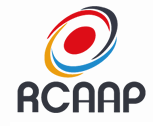Morphological characterization of remaining specimens of the Curraleiro horse in Central Brazil
DOI:
https://doi.org/10.5433/1679-0359.2022v43n1p449Keywords:
Zootechnical indices, Linear measures, Creole breeds, Local breeds, Animal genetic resource.Abstract
This study aimed to carry out the morphological characterization of the remaining specimens of the Curraleiro horse in municipalities of the state of Goiás, Brazil. Forty male horses were evaluated using the age of five years as a criterion. Sixteen linear measurements and 13 zootechnical indices were obtained. Subsequently, the mean, standard deviation, minimum, maximum, and covariances of these measures and indices were obtained using the software IBM SPSS Statistics for Windows. The measures withers height (WH), croup height (CH), midback height (MH), sternum-to-ground height (SH), chest index (CI), and estimated weight (W) allowed characterizing Curraleiro horses as small-sized, light, and fast, with proportional measures. The dactyl-thoracic index (DTI), body index (BI), conformation index (CFI), load index 1 and 2 (LOI1 and LOI2), and compactness index 1 and 2 (COI1 and COI2) showed that the Curraleiro horse has an intermediate capacity for speed and strength, bearing considerable weight on the back, with saddling aptitude and fast work. These results represent the beginning of the formation of a database that may contribute to future studies and the conservation of the Curraleiro horse in the state of Goiás.Downloads
References
Gonçalves, R. W., Costa, M. D., Rezende, A. S. C., Rocha, V. R., Jr., & Leite, J. R. A. (2012). Efeito da endogamia sobre características morfométricas em cavalos da raça Mangalarga Marchador. Arquivo Brasileiro de Medicina Veterinária e Zootecnia, 64(2), 419-426. doi: 10.1590/S0102-09352012000200 023
Lucena, J. E. C., Vianna, S. A. B., Berbari, F., Neto, Sales, R. L. M., Fº., & Diniz, W. J. S. (2016). Caracterização morfométrica de fêmeas, garanhões e castrados da raça Campolina baseada em índices. Arquivo Brasileiro de Medicina Veterinária e Zootecnia, 68(2), 431-438. doi: 10.1590/1678-4162-8016
McManus, C., Falcão, R. A., Spritze, A., Costa, D., Louvandini, H., Dias, L. T.,... Garcia, J. A. S. (2005). Caracterização morfológica de equinos da raça campeiro. Revista Brasileira de Zootecnia, 34(5), 1553-1562. doi: 10.1590/S1516-35982005000500015
Meira, C. T., Pereira, I. G., Farah, M. M., Pires, A. V., Garcia, D. A., & Cruz, V. A. R. (2013). Seleção de características morfofuncionais de cavalos da raça Mangalarga Marchador por meio da análise de componentes principais. Arquivo Brasileiro de Medicina Veterinária e Zootecnia, 65(6), 1843-1848. doi: 10.1590/S0102-09352013000600036
Melo, J. B., Pires, D. F., Ribeiro, M. N., Santos, D. O., & Silva, H. G. O. (2011). Estudo zoométrico de remanescentes da raça equina Nordestina no Município de Floresta, Pernambuco - Brasil. Actas Iberoamericanas de Conservación Animal, 1, 71-74. Recuperado de http://www.uco.es/conbiand/aica/ templatemo_110_lin_photo/articulos/2011/Melo2011_1_71_74.pdf
Miserani, M. G., McManus, C., Santos, S. A., Silva, J. A., Mariantes, A. S., & Abreu, U. G. P. (2002). Avaliação dos fatores que influem nas medidas lineares do cavalo pantaneiro. Revista Brasileira de Zootecnia, 31(1), 335-341. doi: 10.1590/S1516-35982002000200007
Pimentel, M. L., Pinheiro, M., Maia, H., Fº., Sakamoto, S. M., Nobre, F. V., & Dias, R. V. C. (2014). Parâmetros biométricos de Asininos (Equus asinus) utilizados em provas de corrida no estado do Rio Grande do Norte. Acta Veterinaria Brasilica, 8(2), 136-143. doi: 10.21708/avb. 2014. 8.2.3579
Rezende, M. P. G., Souza, J. C., Mota, M. F., Oliveira, N. M., & Jardim, R. J. D. (2016). Conformation index of horses of different genetic groups. Ciência Animal Brasileira, 17(3), 316-326. doi: 10.1590/10 89-6891v17i321194
Rezende, M. P. G., Souza, J. C., Mota, M. F., Jardim, R. J. D., Ramires, G. G., Silva, R. M., & Souza, C. F. (2014). Morfometria corporal de equinos utilizados em trabalho, esporte e lazer em três municípios do Mato Grosso do Sul. Veterinária e Zootecnia, 21(4), 569-583. Recuperado de https://www.researchgate. net /profile/Marcos-Rezende/publication/284178649
Santiago, J. M., Rezende, A. S. C., Fonseca, M. G., Abrantes, R. G. P., Lage, J., & Lana, A. M. Q. (2013). Comparação entre as medidas morfométricas do rebanho atual de machos Mangalarga Marchador e dos campeões da raça. Boletim de Indústria Animal, 70(1), 46-52. doi: 10.17523/bia.v70n1p46
Santiago, J. M., Rezende, A. S. C., Lana, A. M. Q., Fonseca, M. G., Abrantes, R. G. P., Lage, J.,... Resende, T. M. (2014). Comparação entre as medidas morfométricas de equinos Mangalarga Marchador de marcha batida e marcha picada. Arquivo Brasileiro de Medicina Veterinária e Zootecnia, 66(2), 635-639. doi: 10.1590/1678-41626870
Silva, D. C., Pedroso, A. C. B. R., Fioravanti, M. C. S., & Silva, L. A. F. da. (2018). A história da formação das raças equinas no Brasil. Goiânia, GO: Espaço Acadêmico.
Silva, D. C., Silva, M. C., Goulart, F. F., Cruz, A. S. da, Moura, M. I., Fioravanti, M. C. S.,... Cruz, A. D. da. (2019). Identification of a historic horse ecotype analyzing speech content in central Brazil. Arquivo Brasileiro de Medicina Veterinária e Zootecnia, 71(3), 1047-1057. doi: 10.1590/1678-4162-10269
Velden, F. F. V. (2018). Animais exóticos de origem europeia ou africana entre povos indígenas nas terras baixas da América do Sul: notas para pesquisas futuras. Estudios Latinoamericanos, 38, 141-172. doi: 10.36447/Estudios2018.v38.art8
Downloads
Published
How to Cite
Issue
Section
License
Copyright (c) 2021 Semina: Ciências Agrárias

This work is licensed under a Creative Commons Attribution-NonCommercial 4.0 International License.
Semina: Ciências Agrárias adopts the CC-BY-NC license for its publications, the copyright being held by the author, in cases of republication we recommend that authors indicate first publication in this journal.
This license allows you to copy and redistribute the material in any medium or format, remix, transform and develop the material, as long as it is not for commercial purposes. And due credit must be given to the creator.
The opinions expressed by the authors of the articles are their sole responsibility.
The magazine reserves the right to make normative, orthographic and grammatical changes to the originals in order to maintain the cultured standard of the language and the credibility of the vehicle. However, it will respect the writing style of the authors. Changes, corrections or suggestions of a conceptual nature will be sent to the authors when necessary.


















